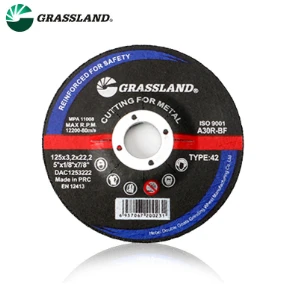

On the expertise front, understanding the variety of materials used in flap disc construction is crucial. Disc materials, typically consisting of aluminum oxide, silicon carbide, or zirconia alumina, influence performance outcomes. For instance, zirconia alumina offers longevity and resilience, making it ideal for heavy-duty grinding. Such specialization ensures that metalworkers can select a flap disc tailored precisely to their needs, whether dealing with stainless steel, mild steel, or non-ferrous metals. From an authoritative perspective, leading manufacturers emphasize the importance of safety and ergonomics. Modern flap discs are engineered to reduce vibration and heat accumulation, thereby minimizing operator fatigue and enhancing safety. Improved bonding agents used in the construction of these discs are designed to resist fragmentation at high speeds, vital for maintaining workplace safety standards. Trustworthiness in the performance of a flap disc is largely backed by industry standards and testing. Reputable brands invest in rigorous quality checks to certify their products meet or exceed international safety benchmarks. This commitment to quality ensures that users receive products that not only perform effectively but also uphold safety in metalworking environments. In conclusion, the grinder flap disc for metal represents a fusion of ingenuity and practicality in metalworking. Its proven track record, bolstered by user experiences, professional endorsements, and manufacturer reliability, makes it a staple in any metalworker's arsenal. Whether refining welds on a structural beam or adding the finishing touches to a custom metal fixture, the flap disc delivers precision, efficiency, and peace of mind, proving invaluable in the pursuit of metalworking excellence.
Post time:Feb - 15 - 2025

















